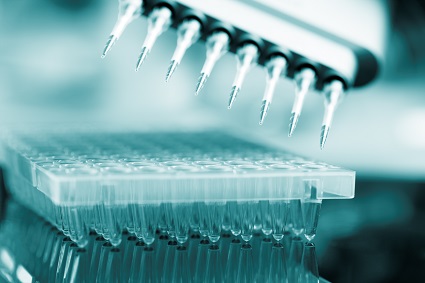Master NGS library preparation for high-quality sequencing
Overview
Library preparation is the first step of next generation sequencing. It allows DNA or cDNA to adhere to the sequencing flow cell and allows the sample to be identified. Two common methods of library preparation are ligation-based library prep and tagmentation-based library prep. Once your libraries are prepared, you will be ready for the next step in your next generation sequencing workflow.

What is next generation sequencing (NGS)?
Next generation sequencing, enables sequence profiling of everything from genomes and transcriptomes to DNA-protein interactions. The technologies used are an integral part of research and discovery in biology. The ability to generate large amounts of sequence data in a relatively short amount of time enables a wide range of applications, accelerating advances in research and revolutionizing our understanding of human health and disease.
PREPARING SEQUENCING LIBRARIES
Before DNA or cDNA (synthesized from RNA) can be sequenced, they must be fragmented, end-repaired, and made into sequencing libraries. Put simply, sequencing libraries are pools of DNA fragments containing adapter sequences compatible with a specific sequencing platform and indexing barcodes for individual sample identificaiton. The main library preparation methods are ligation-based library preparation tagmentation-based library preparation, and amplicon library preparation. The specific protocol you choose depends on your sequencing platform and downstream analysis. The basic steps of library preparation are fragmentation and end repair, addition of adapters, and (optional), PCR amplification:
- Fragmentation and end repair: Short-read sequencing technologies like those from Illumina cannot readily analyze very long DNA strands, so DNA must be fragmented into smaller, uniform pieces. After fragmentation, the DNA fragments are end repaired or end polished. Generally, a single adenine base is added to form an overhang via an A-tailing reaction. This A overhang allows adapters containing a single thymine overhanging base to base pair with the DNA fragments. If performing RNA-seq, RNA must first be transcribed into cDNA. Fragmentation can be performed either before or after cDNA synthesis.
- Addition of adapters: After fragmentation (or, in the case of tagmentation-based library preparation, concurrently with fragmentation), adapters are covalently attached to the ends of the DNA fragments. These adapters serve multiple functions: they can the sequences to a flow cell or ensure sequencing platform-specific compatibility, and they also include barcodes (also called indexes) to identify samples and permit multiplexing in both target enrichment and in sequencing. IDT has several options for NGS adapters and indexing primers
- PCR amplification (optional): Whether you amplify your libraries via PCR depends on your input sample and experimental goals, whether you need to amplify a target region(s) of the genome, and the adapter type used. After PCR amplification,
any remaining oligonucleotides and small fragments must be removed. PCR clean-up can be performed using magnetic beads or a spin column.
Downstream applications
There are several downstream applications for NGS. Choosing the appropriate library preparation protocol can significantly impact the quality and accuracy of your results. Downstream applications include:
- Whole genome sequencing (WGS)
- PCR-free or PCR-amplified sequencing
- Detection of germline inherited single nucleotide polymorphisms (SNPs), copy number variants (CNVs), and insertions/deletions (indels)
- Low-frequency somatic variation detection of single nucleotide variants (SNVs), CNVs, and indels
- Target enrichment use hybridization capture or amplicon sequencing of specific regions of the genome (e.g., the exome or transcripts of interest)specific regions of the genome (e.g., the exome or transcripts of interest)
- RNA-seq
- Metagenomic sequencing
NGS 101 application guide
This detailed overview walks you through major advances in sequencing technology, types of next generation sequencing, their applications and more.
Library preparation products
Are you working in or getting started on one of these applications? See how you can easily improve your workflow and results with IDTs suite of library preparation products
xGen NGS DNA Library Preparation
Whether your research focuses on decoding the genomic sequences of complex microbial communities or identifying inherited germline single nucleotide polymorphism (SNPs) from degraded samples, xGen DNA Library Preparation Kits have simple workflows that provide confident results.
Methyl-Sequencing Library Preparation
The xGen Methyl-Seq Library Prep Kit utilizes Adaptase™ technology for capturing bisulfite-converted ssDNA molecules in an unbiased manner within epigenetic research studies. The resultant libraries represent a sample base composition of the genome.
xGen NGS RNA Library Preparation
Research on differential gene expression, novel fusion genes, or alternative splicing patterns involves decoding cellular RNA. The IDT xGen NGS RNA Library Preparation Kits provide high-quality data and fast, comprehensive workflows to help you make the next discovery.
xGen NGS Adapters & Indexing Primers
Adapters and indexing primers are key components of NGS library preparation workflows. Whether your project requires a basic indexing solution or a more sophisticated design, we have the products and expertise to deliver the right solution.